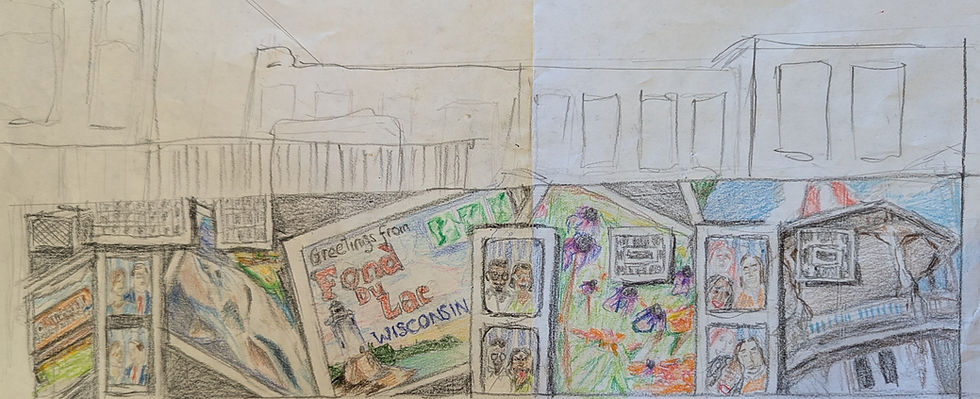Painting on Split Face Concrete Block
- Paul Krikau

- Jun 9
- 3 min read
This was my first mural since I was a kid, and I don't think I prepared myself well for exterior wall painting. Firstly, exterior latex paint is expensive and more difficult to work with than tubes of acrylic. Secondly, I am old, and painting over my head or kneeling on asphalt in 80-degree weather hits differently than it would if I were, say, in my twenties. Still, each day I worked on the murals, I felt good. To quote Peter Gibbons from Office Space, "This isn't so bad, huh? Makin' bucks, gettin' exercise, workin' outside."

The hardest part was getting used to painting on split-faced CMU (concrete masonry units) that comprised the majority of the surface for the large mural. It is the rough-textured cinder blocks used on many retail buildings. You've probably seen it. I knew I would be painting on it, and yet I chose to make the entire piece's composition and artistic integrity dependent on the straight lines of photo edges. Additionally, two parts of the design were architectural representation, and both were designed to be skewed to the lines of the actual mural surface (i.e. the building I was painting on) and were based on photos taken from odd angles. It was difficult just from a composition standpoint. This was complicated by trying to draw the lines straight over the bumpy surface. Not my best choice.

But, after a while, I figured out that a four-foot-long level was long enough to lie relatively flat along the surface. If I held it steady and did not angle the paint brush towards the level (which is a common tendency), I could paint a straight enough line against the level. The key here is to put enough paint on the brush to do this in one stroke, because attempting multiple paint dips while holding the level steady was challenging. Additionally, the rolling, uneven surface meant there was just all-around more surface to cover with the brushes and often required using a small brush to get adequate coverage.

But! The split-face CMU absolutely adds depth, texture, and lightness to some of the mural sections. In particular, the wildflower portion of the large mural turned out so much more vibrant than I expected because of the way light hits the painted blocks. I do not believe that the purple coneflowers and their leaves would pop nearly as vigorously if they were painted on a smoother surface.

The next blog entry will contain pictures of the finished murals and all the lessons learned from taking on large exterior art projects as opposed to small traditional substrates, like canvas or paper.
Are you a muralist? Do you have any tips and tricks you've learned that would help others branching out into this art form? Leave a comment and pay that knowledge forward! Thanks for stopping by!



Comments